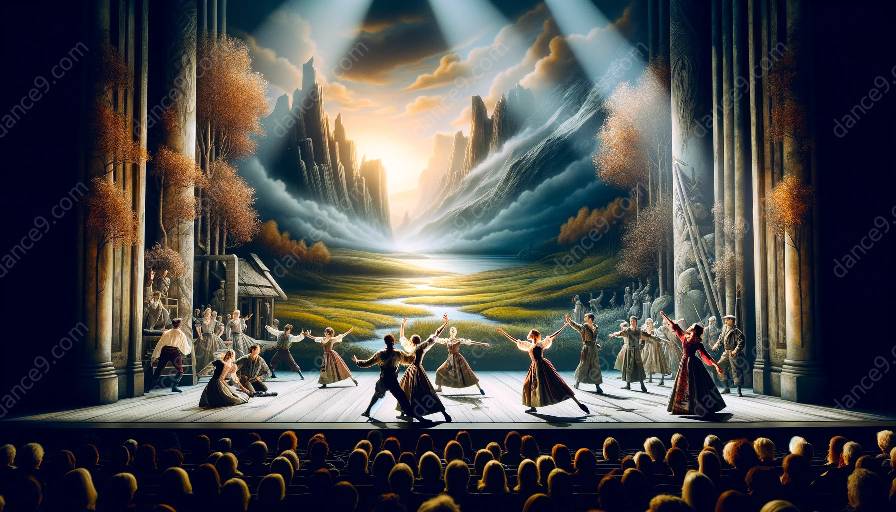Choreography and narrative are two artistic realms that converge in narrative choreography, a form of expression that seamlessly combines movement and storytelling. In this comprehensive guide, we will delve into the theoretical frameworks and analysis of narrative choreography, exploring the interdisciplinary nature of this art form and its impact on the creative landscape. From the foundational principles to the intricate analysis of narrative elements infused in choreographic compositions, this exploration will provide valuable insights for dancers, choreographers, and enthusiasts of contemporary dance.
The Intersection of Narrative and Choreography
Narrative choreography, at its core, encompasses the fusion of narrative elements with the art of choreography. It involves the utilization of movement, gesture, and spatial relationships to convey a compelling story, evoking emotions and engaging audiences through the language of dance. As such, the theoretical frameworks and analysis of narrative choreography revolve around understanding the symbiotic relationship between narrative structures and choreographic elements, as well as the ways in which these components intertwine to form cohesive and captivating compositions.
Theoretical Frameworks in Narrative Choreography
One of the fundamental theoretical frameworks in narrative choreography is the concept of embodiment, which emphasizes the physical embodiment of narrative themes and motifs through movement. This approach seeks to convey the narrative arc, character motivations, and emotional depth through the physicality of dancers, immersing the audience in the unfolding story. Furthermore, the incorporation of narrative structures such as exposition, rising action, climax, and resolution into choreographic design plays a pivotal role in shaping the overall narrative experience.
Another significant framework is the interplay of time and space within choreographic narratives. Choreographers often manipulate temporal and spatial dimensions to establish the pace, rhythm, and spatial dynamics that mirror the narrative progression. By strategically employing techniques such as temporal distortions, spatial patterning, and directional cues, choreographers craft a narrative choreography that transcends traditional storytelling methods, offering multidimensional experiences that resonate with audiences.
Analysis of Narrative Elements in Choreography
Delving into the analysis of narrative elements within choreography unveils a rich tapestry of expressive tools and techniques. Movements, gestures, and physical interactions serve as the building blocks for conveying narrative nuances, character relationships, and abstract concepts. This analysis entails examining the choreographic vocabulary, dynamics, and phrasing to discern how narrative intentions are translated into kinetic expressions, enriching the storytelling potential of choreographic works.
Additionally, the examination of thematic motifs, symbolism, and metaphorical representations within choreographic narratives illuminates the deeper layers of meaning embedded within the movement language. Through critical analysis, observers and practitioners can decipher the intricate symbolism and thematic resonance encoded in choreographic storytelling, fostering a deeper appreciation for the narrative complexities inherent in dance compositions.
The Implications of Narrative Choreography
The theoretical frameworks and analysis of narrative choreography have profound implications for both the creative process and the audience experience. By integrating narrative elements into choreographic practices, dancers and choreographers gain a versatile palette for artistic expression, enabling them to communicate profound narratives through an embodied form of storytelling. Furthermore, audiences are invited to engage with dance performances on a deeper level, transcending aesthetic appreciation to connect with the emotional, intellectual, and narrative dimensions of the choreographic storytelling.
Ultimately, the theoretical exploration and critical analysis of narrative choreography serve to underscore the fusion of narrative and choreographic artistry, reaffirming the power of movement as a storytelling medium. As this interdisciplinary field continues to evolve, its theoretical underpinnings and analytical frameworks will undoubtedly inspire new creative endeavors and enrich the cultural landscape with innovative narrative expressions through dance.






































